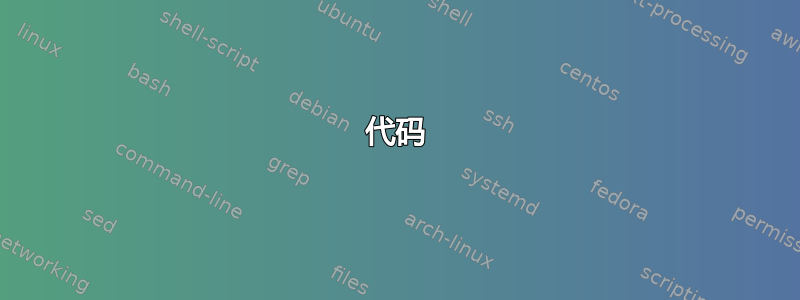
基于Gonzalo Medina 的回答,LaTeX 中的蝙蝠侠方程式已接近完成。

\documentclass[border=10pt, tikz]{standalone}
\usepackage{pgfplots}
\usetikzlibrary{arrows}
\tikzset{
>=stealth',
punkt/.style={
rectangle,
rounded corners,
draw=black, very thick,
text width=6.5em,
minimum height=2em,
text centered},
pil/.style={
->,
thick,
shorten <=2pt,
shorten >=2pt,}
}
\pgfplotsset{
grid style={gray, dashed, very thin},
every inner x axis line/.append style={pil},
every inner y axis line/.append style={pil},
}
\begin{document}
\begin{tikzpicture}
\begin{axis}[
axis lines=middle,
grid=major,
xmin=-9,
xmax=9,
ymin=-9,
ymax=9,
xtick={-8,-7,...,8},
ytick={-8,-7,...,8},
width=12cm,
height=12cm,
]
\addplot+[mark=none, red!50!black] function[raw gnuplot] {
set contour base;
set cntrparam levels discrete 0.0;
unset surface;
set view map;
set isosamples 500;
splot ((x/7.0)^2.0*sqrt(abs(abs(x)-3.0)/(abs(x)-3.0))+(y/3.0)^2.0*sqrt(abs(y+3.0/7.0*sqrt(33.0))/(y+3.0/7.0*sqrt(33.0)))-1.0);
splot (abs(x/2)-((3*sqrt(33)-7)/112)*x^2-3+sqrt(1-(abs(abs(x)-2)-1)^2)-y);
splot (9*sqrt(abs((abs(x)-1)*(abs(x)-.75))/((1-abs(x))*(abs(x)-.75)))-8*abs(x)-y);
splot (3*abs(x)+.75*sqrt(abs((abs(x)-.75)*(abs(x)-.5))/((.75-abs(x))*(abs(x)-.5)))-y);
splot (2.25*sqrt(abs((x-.5)*(x+.5))/((.5-x)*(.5+x)))-y);
splot (6*sqrt(10)/7+(1.5-.5*abs(x))*sqrt(abs(abs(x)-1)/(abs(x)-1))-(6*sqrt(10)/14)*sqrt(4-(abs(x)-1)^2)-y);
};
\end{axis}
\end{tikzpicture}
\end{document}
疑问和麻烦
曲线是分开的(它们应该是相连的),而且曲线有点“凹凸不平”。因此,应该将函数连接起来,并移除凹凸不平。
此外,我想用橙色填充蝙蝠侠[orange!30],就像它在这个情节。
希望您能帮上忙 ;-) ... 谨致问候!提前谢谢您!
答案1
这是一个纯 TikZ/PGF/PGFPlots 解决方案。您可以声明一个分段函数来\pgfmathdeclarefunction确保线连接。您的数学公式对我来说没用,相反我使用了这个公式。
代码
\documentclass[border=10pt]{standalone}
\usepackage{pgfplots}
\usetikzlibrary{arrows}
\usepgfplotslibrary{fillbetween}
% Below function
\pgfmathdeclarefunction{bA}{1}{\pgfmathparse{-3 * sqrt(1 - (#1/7)^2) * sqrt(abs(abs(#1) - 4)/(abs(#1) - 4))}}
\pgfmathdeclarefunction{bB}{1}{\pgfmathparse{abs(#1/2) - 0.0913722 * #1^2 - 3 + sqrt(1 - (abs(abs(#1) - 2) - 1)^2)}}
\pgfmathdeclarefunction{bpart}{1}{\pgfmathparse{%
(and(#1 >= -7, #1 < -4.03) * bA(#1))+%
(and(#1 >= -4.03, #1 <= 4.03) * bB(#1))+%
(and(#1 > 4.03, #1 <= 7) * bA(#1))}}
% Top Function
\pgfmathdeclarefunction{tA}{1}{\pgfmathparse{2 * sqrt((-abs(abs(#1) - 1)) * abs(3 - abs(#1))/((abs(#1) - 1) * (3 - abs(#1)))) * (1 + abs(abs(#1) - 3)/(abs(#1) - 3)) * sqrt(1 - (#1/7)^2) + (5 + 0.97 * (abs(#1 - 0.5) + abs(#1 + 0.5)) - 3 * (abs(#1 - 0.75) + abs(#1 + 0.75))) * (1 + abs(1 - abs(#1))/(1 - abs(#1)))}}
\pgfmathdeclarefunction{tB}{1}{\pgfmathparse{(2.71052 + 1.5 - 0.5 * abs(#1) - 1.35526 * sqrt(4 - (abs(#1) - 1)^2)) * sqrt(abs(abs(#1) - 1)/(abs(#1) - 1)) + 0.9}}
\pgfmathdeclarefunction{tpart}{1}{\pgfmathparse{%
(and(#1 >= -7, #1 <-3)* tA(#1))+%
(and(#1 >= -3, #1 <-1)* tB(#1))+%
(and(#1 >= -1, #1 <=1)* tA(#1))+%
(and(#1 > 1, #1 <=3)* tB(#1))+%
(and(#1 > 3, #1 <=7)* tA(#1))}}
\tikzset{
>=stealth',
punkt/.style={
rectangle,
rounded corners,
draw=black, very thick,
text width=6.5em,
minimum height=2em,
text centered},
pil/.style={
->,
thick,
shorten <=2pt,
shorten >=2pt,}
}
\pgfplotsset{
grid style={gray, dashed, very thin},
every inner x axis line/.append style={pil},
every inner y axis line/.append style={pil},
}
\begin{document}
\tikzset{batman/.style={domain=-7:7, very thick}}
\begin{tikzpicture}
\begin{axis}[
axis lines=middle,
grid=major,
xmin=-9,
xmax=9,
ymin=-9,
ymax=9,
xtick={-8,-7,...,8},
ytick={-8,-7,...,8},
width=12cm,
height=12cm,
]
\addplot[batman, samples=258, name path=T] {tpart(x)};
\addplot[batman, samples=208, name path=B] {bpart(x)};
\addplot[orange!70] fill between[of=T and B];
\end{axis}
\end{tikzpicture}
\end{document}



